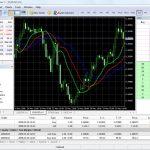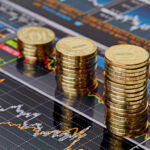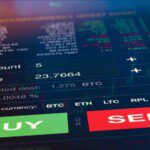Last Updated on December 9, 2023 by admin
The aggressive fall in valuations seen in the crypto market recently has certainly caused some traders to lose faith in this asset class, and adopt a conservative approach instead. If you’ve already done the MT4 download and are hesitant about jumping on the crypto boat, you are not alone right now.
The currency market, on the other hand, has been more stable in terms of daily price ranges, and also boasts a long track record. FX trading is back in the spotlight, so if you want to find out more about the differences between FX and crypto, start by reading this comprehensive article.
Fiat vs digital currencies
Digital currencies are assets that exist on a blockchain, operating mostly in a decentralized fashion, not controlled by any public entity. In the case of fiat currencies, central banks and private banks make up for the bulk of the centralized monetary system that is still in place today. This is important, since it helps you know who and what exactly affects the price of currencies, and plan accordingly.
While for crypto, the maximum supply of tokens is capped, things are different with fiat, where the monetary base can be expanded by central banks, via the extension of new loans, as well as asset purchases. This is what happened in 2020 when public authorities had to suppress market volatility and prevent a liquidity crunch.
At that time, central banks lowered interest rates, bought government bonds and even corporate bonds, as was the case with the US Federal Reserve increasing the monetary supply and diminishing the purchasing power of fiat currencies.
Read: Understanding Market Sentiment with MetaTrader 5 Trading Tools
Different fundamentals
On top of the usual technical analysis methods, FX traders also need to monitor fundamentals. With crypto, some of the top fundamental factors are adoption prospects, halving events, regulation, and blockchain updates. In forex, though, you need to adjust your exposure based on several economic indicators released by the government.
Among this long list of indicators, some very important ones are unemployment, inflation, GDP growth, industrial activity, consumer sentiment, and manufacturing. These indicators show whether an economy is expanding/contracting, as well as the strength of consumer spending. Based on the number, market participants adjust by selling or buying a currency in exchange for others.
Compared to crypto, where prices are moving up against fiat when there is a high risk appetite, in the FX market things are relative. Currencies are priced against each other, so in nominal terms, it’s not possible to see all coins fall/rise at the same time. While some are strong, others will be weak, and vice-versa.
Also read: How to calculate foreign exchange fees
Market volatility
Another important factor to consider when trading is volatility. If cryptocurrencies remain very volatile assets, and daily ranges post double-digit figures, the FX market is the most liquid in the world, which means daily price swings rarely surpass 1-2%.
Your trading regime should be different, given the fact that with currency trading it’s possible to place tighter stop losses, and trade larger volumes, since margin requirements are lower. The probability of finding accurate entry locations can also increase, since support/resistance levels hold better in a very liquid environment.


